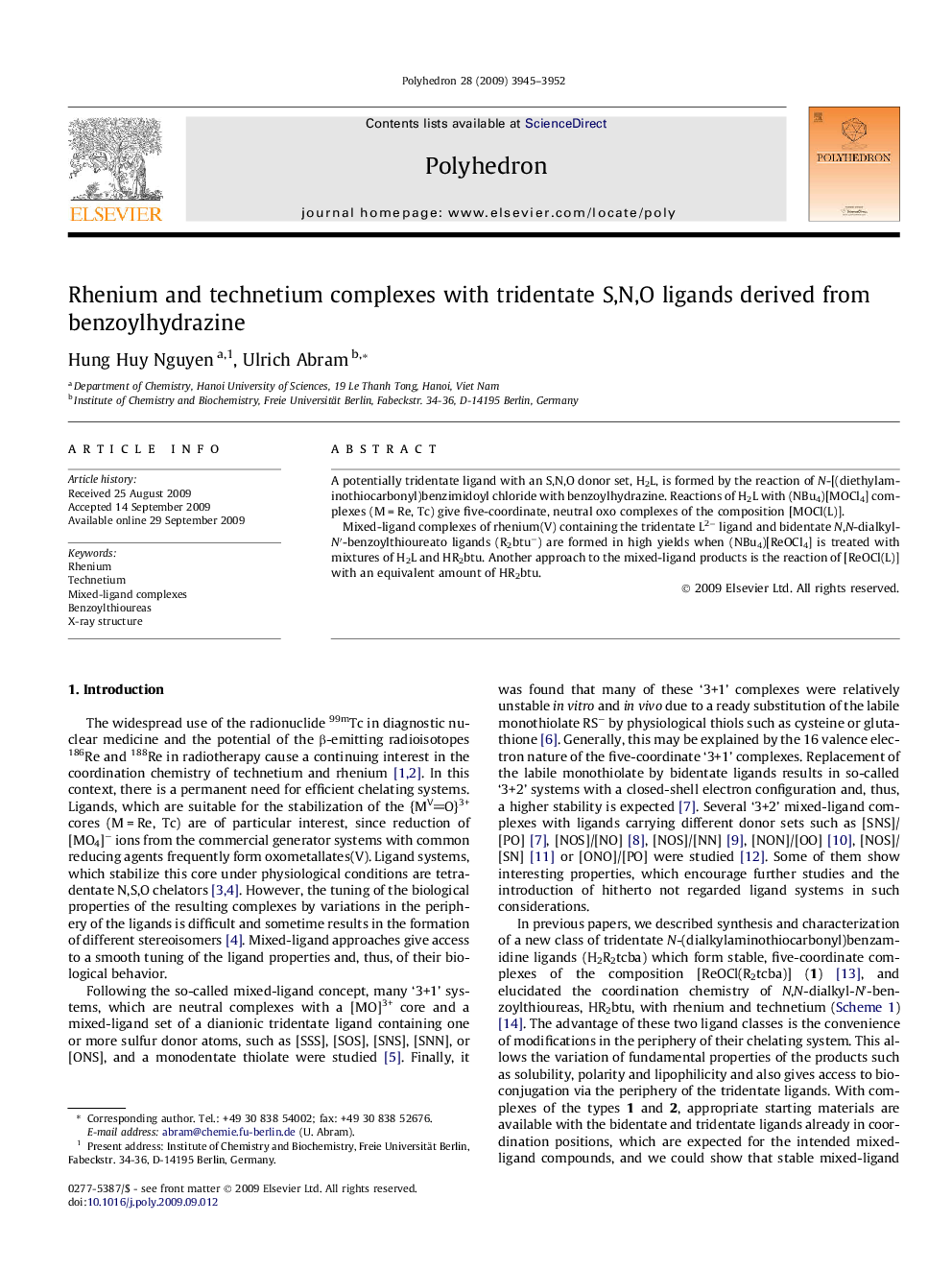| Article ID | Journal | Published Year | Pages | File Type |
|---|---|---|---|---|
| 1338888 | Polyhedron | 2009 | 8 Pages |
A potentially tridentate ligand with an S,N,O donor set, H2L, is formed by the reaction of N-[(diethylaminothiocarbonyl)benzimidoyl chloride with benzoylhydrazine. Reactions of H2L with (NBu4)[MOCl4] complexes (M = Re, Tc) give five-coordinate, neutral oxo complexes of the composition [MOCl(L)].Mixed-ligand complexes of rhenium(V) containing the tridentate L2− ligand and bidentate N,N-dialkyl-N′-benzoylthioureato ligands (R2btu−) are formed in high yields when (NBu4)[ReOCl4] is treated with mixtures of H2L and HR2btu. Another approach to the mixed-ligand products is the reaction of [ReOCl(L)] with an equivalent amount of HR2btu.
Graphical abstractNovel thiocarbamoylbenzamidines prepared from N-[(dialkylamino)(thiocarbonyl)benzimidoyl chlorides and benzoylhydrazine react with (NBu4)[MOCl4] complexes (M = Re, Tc) under formation of [MOCl(L)] chelates. The labile chloro ligands can readily be replaced by bidentate benzoylthioureas under formation of six-coordinate mixed-ligand complexes.Figure optionsDownload full-size imageDownload as PowerPoint slide
